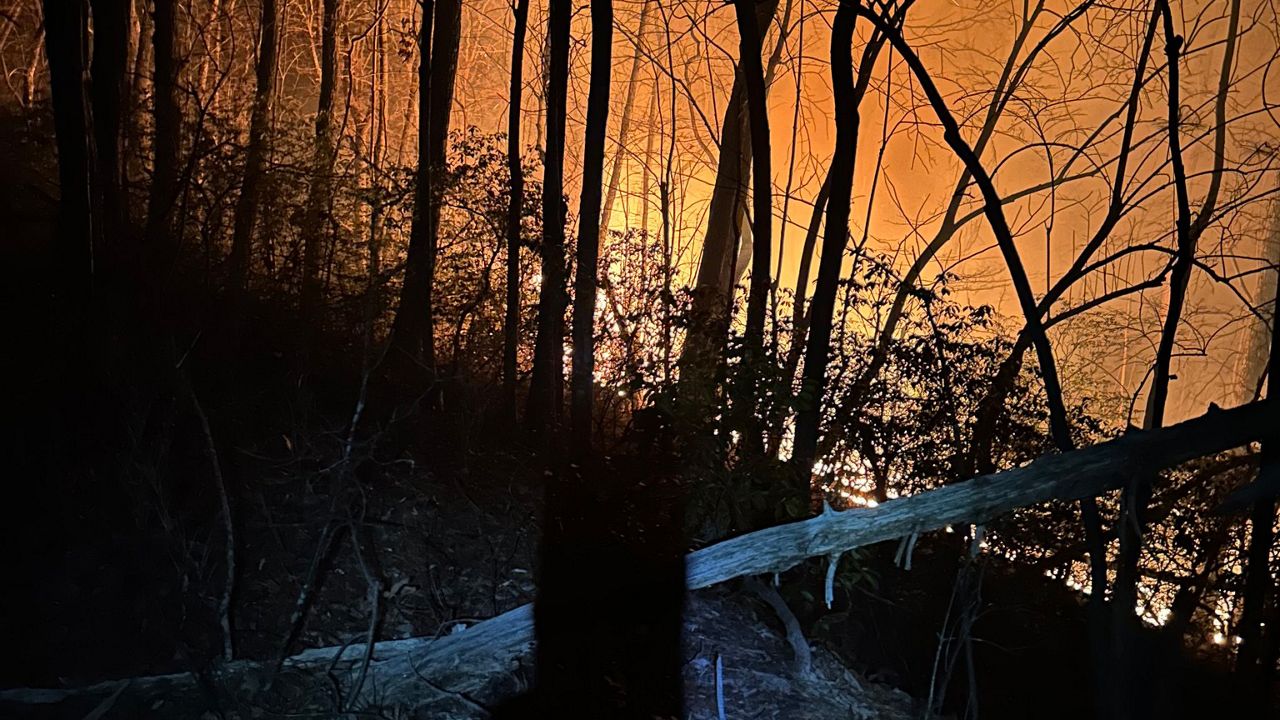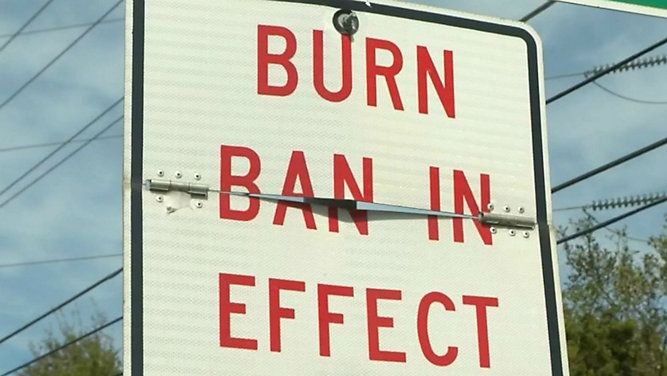Wildfires continue to rage across western North Carolina. The Black Cove Complex Fire in Polk County continues to grow in the mountains southeast of Asheville. Several other fires in Haywood, Swain, Jackson, Buncombe and Rutherford counties have forced evacuations and prompted emergency declarations.
Here’s the latest on each major wildfire:
Black Cove Complex Fire (Polk & Henderson Counties)
Fire status:
• Size: Over 6,800 acres burned
• Containment: Limited containment efforts underway
• Personnel: 500+ firefighters and emergency responders
• Evacuations: 250+ homes evacuated
• Injuries: One firefighter airlifted to a hospital after being trapped under a fallen tree
The Black Cove Complex includes multiple fires burning in rugged terrain southeast of Asheville. Due to its severity, it has been classified as the highest priority fire in the country, according to the Forest Service, meaning it will receive additional resources and personnel.
Emergency officials have expanded mandatory evacuation orders to include Holbert Cove Road, Coyote Ridge, Sam’s Gap Lane, Lady Slipper Trail, Green River Cove Road, Big Hungry Road, Spurgeon Cove Lane, English Heifer Cove Road, Deer Trail and Scarlets Mountain Road.
Major fires in the Black Cove Complex:
• Black Cove Fire: Over 3,000 acres burned, 17% containment
• Deep Woods Fire: Over 3,200 acres burned, 11% containment
• Fish Hook Fire (near Lake Adger): 199 acres burned, 86% contained
The N.C. Emergency Management Division is providing Black Hawk helicopters and air support to help battle the flames. Firefighters are constructing control lines along the Green River to try to stop the fire from spreading into residential areas.
Evacuation and shelter information:
• Mandatory evacuations in Level III zones – Residents urged to leave immediately
• Red Cross shelter open at 75 Carmel Lane, Columbus
Weather and air quality concerns:
• Red Flag warning in effect for Polk and Henderson counties
• Code Purple Air Quality Alert (very unhealthy) for Transylvania County
• Code Red Alert (unhealthy) for Henderson, Swain, and Polk counties
Rattlesnake Branch Fire (Haywood County)
Fire status:
• Size: 400-500 acres burned
• Location: Near Cruso, burning westward into the Shining Rock Wilderness Area
• Emergency Declaration: Haywood County under a state of emergency as of 8 p.m. on Thursday
This fire continues to spread westward into remote wilderness areas, making containment efforts difficult.
Alarka Fire (Swain County)
Fire status:
• Size: Over 1,000 acres burned
• Containment: 0% contained as of Friday
• Evacuations: Mandatory evacuations in the Alarka Highlands community
The fire near the Tennessee border has forced evacuations and remains uncontrolled due to difficult terrain and weather conditions.
Other wildfires across Western North Carolina
• Jackson County: 20-acre wildfire reported
• Buncombe County: 50-acre fire active
• Haywood County: 75-acre fire burning
• Rutherfordton Fire: Burned 5 acres, forced evacuations but is now under control
Firefighting challenges & response efforts
Firefighters are facing dry weather, gusty winds and rugged terrain. The aftermath of flooding from Helene has left behind debris to fuel the fires, further complicating containment efforts.
A temporary flight restriction is in place to allow firefighting aircraft, helicopters, and drones to operate without obstruction.
Gov. Josh Stein has declared a state of emergency in 34 western counties, mobilizing additional firefighting resources across the region.
“Please stay safe and listen to evacuation orders," Stein said. "Our teams are using every available resource to contain these fires.”
State and federal assistance
• Helicopters and air tankers have been deployed
• Additional personnel arriving from across the U.S.
• N.C. Helo-Aquatic Rescue Team ready to assist firefighter evacuations
What residents need to know
- Check out the forest service's fire-tracking website
- Follow official updates from local emergency management
- Prepare for possible evacuations if you are near any active fires
- Stay safe and informed







